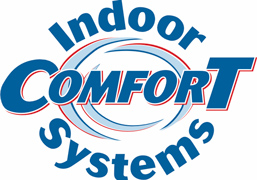
If you’re among the usual American households who pay more than $2,000 every year on energy expenses, adding a smart thermostat is a great way to keep energy costs low. Although mostresidences rely on programmable thermostats, chances are yours isn’t being made the most of as it’s on “hold” all the time.
When installing a new thermostat, the Nest smart thermostat is one of the most popular options. That’s due to the fact it picks up on your temperature preferences and activities, and then develops an energy-efficient schedule to match. You can also monitor and raise it from just about anywhere with your smartphone.
On average, Nest says its thermostat saves about 10-12% on heating expenses and about 15% on cooling expenses. That’s about $131 to $145 saved annually, which helps it pay for itself in less two years. And the majority of utility businesses have rebate programs that help you install a smart thermostat for free or close to it.
When you’re getting a smart home thermostat, you’ll want to ensure it’s compatible with your HVAC system. This is especially important if your equipment is older. If it’s not, you may run into problems, like weird furnace or air conditioner behavior. That’s why it’s essential to have a professional like Indoor Comfort Systems HVAC help you select a new thermostat and handle your smart thermostat installation.
Here’s how to determine if the Nest is compatible with your HVAC system.
Nest Works with the Majority of Heating and Cooling Systems
The good news is that Nest designed its thermostat to operate with many different 24-volt systems, including aging ones.
This covers heating and cooling systems powered by:
- Natural gas
- Oil
- Electricity
Before you get a Nest, you can use the Compatibility Checker to ensure a simple transition. Once you’ve confirmed it’s a match, your Nest will work you through compatibility and wiring when you start using it.
The Nest Learning Thermostat works with the biggest range of home comfort units, such as heat pumps, furnaces and air conditioners. It also works with highly energy-efficient multistage systems, dual-fuel equipment, humidifiers and dehumidifiers, but you’ll likely need a pro like Indoor Comfort Systems HVAC to handle the detailed wiring and setup process.
Does the Nest Have to Have a C-Wire?
If you’ve done research on the Nest, you’ve likely come across information about the C-wire, or common wire. This wire energizes your smart thermostat when it can’t draw enough power from the other wires.
If you don’t have a C-wire, it’s usually still okay to install a Nest. The company says its thermostats were designed to require not much power. Most of the time, this means they can operate properly without this wire.
Have a smart thermostat without a C-wire and noticing strange heating and cooling behavior? An HVAC pro like Indoor Comfort Systems HVAC can put in a C-wire for you.
Our Experts Make Smart Thermostat Installation Easy
Getting a new thermostat makes it easier to manage your utility and cooling costs while keeping your {house|residences|home cozy. If you’re considering adding a Nest smart thermostat to your home, Indoor Comfort Systems HVAC can help you select the ideal model for your home and then expertly install it. Call us at 215-741-5505 to start right away!
